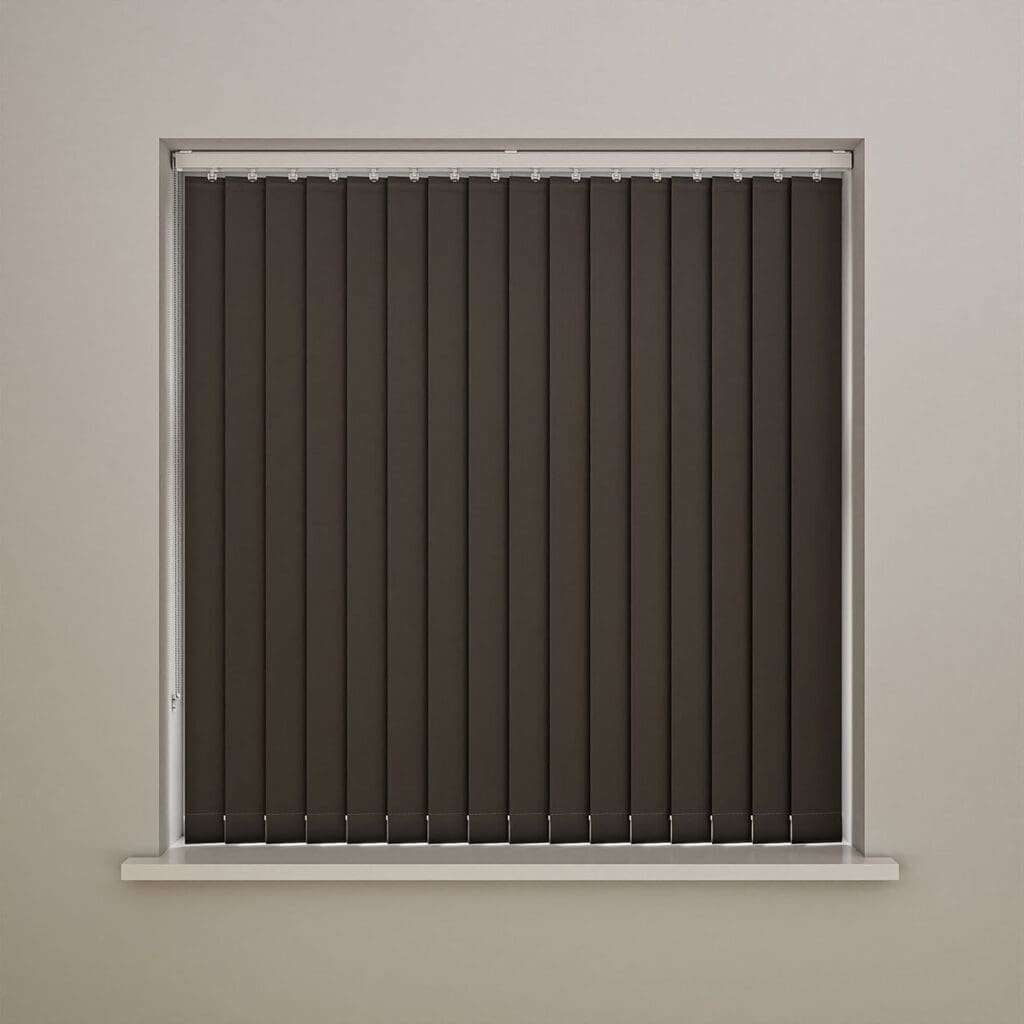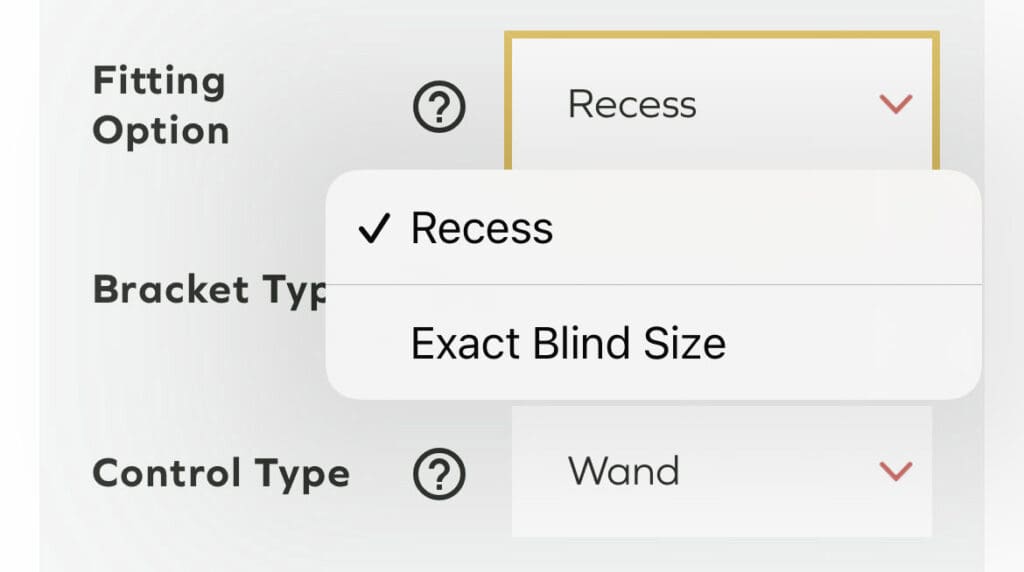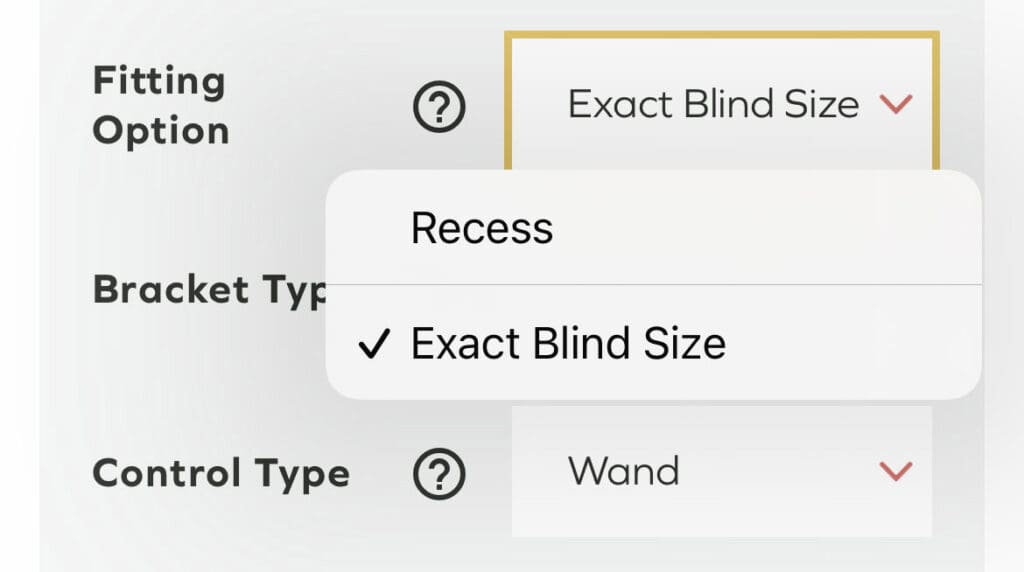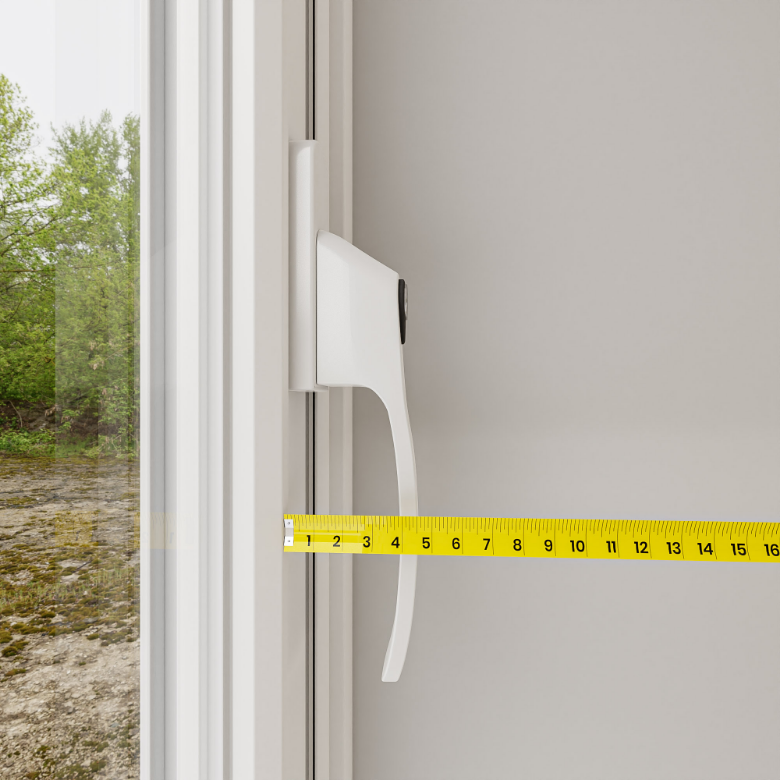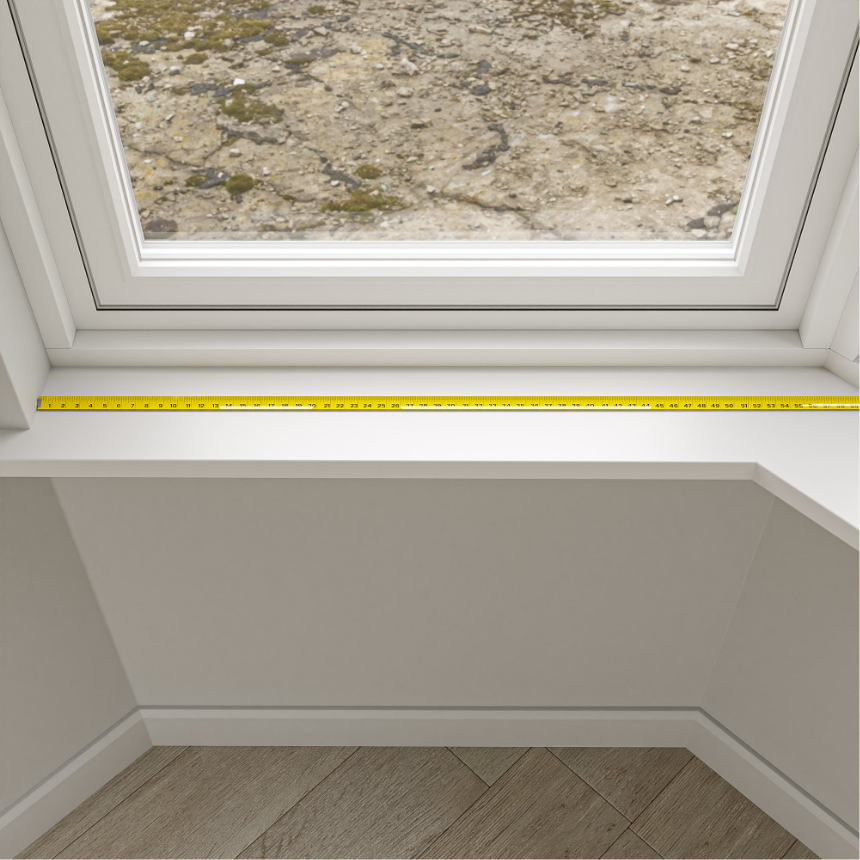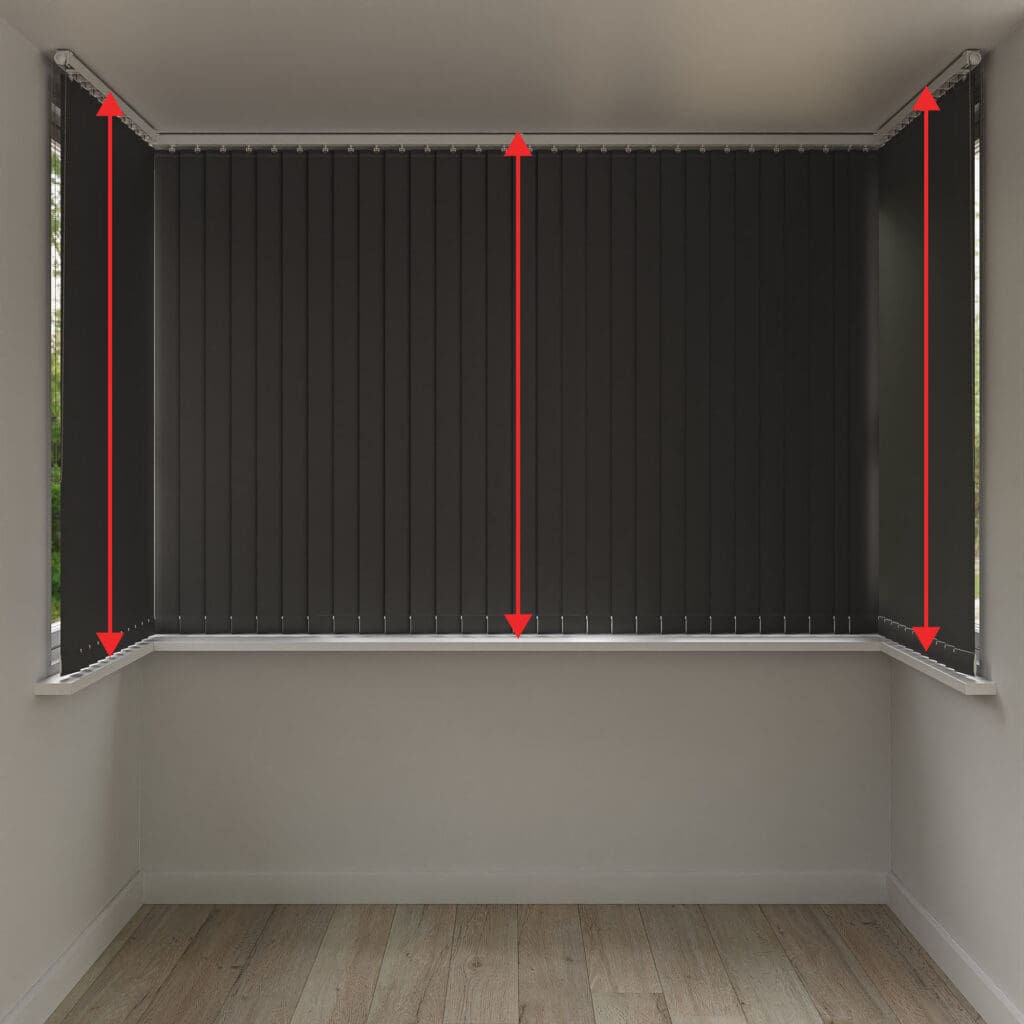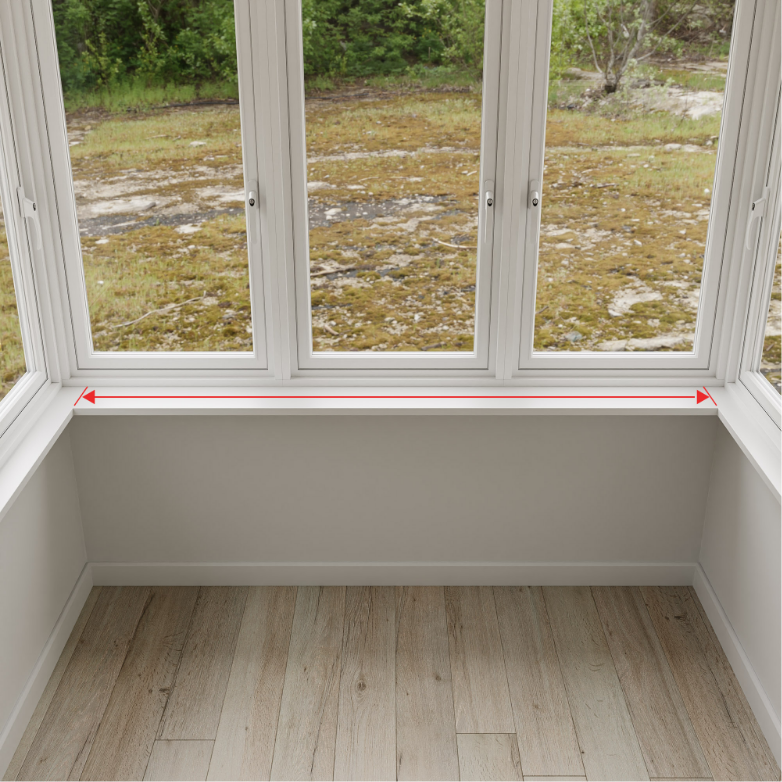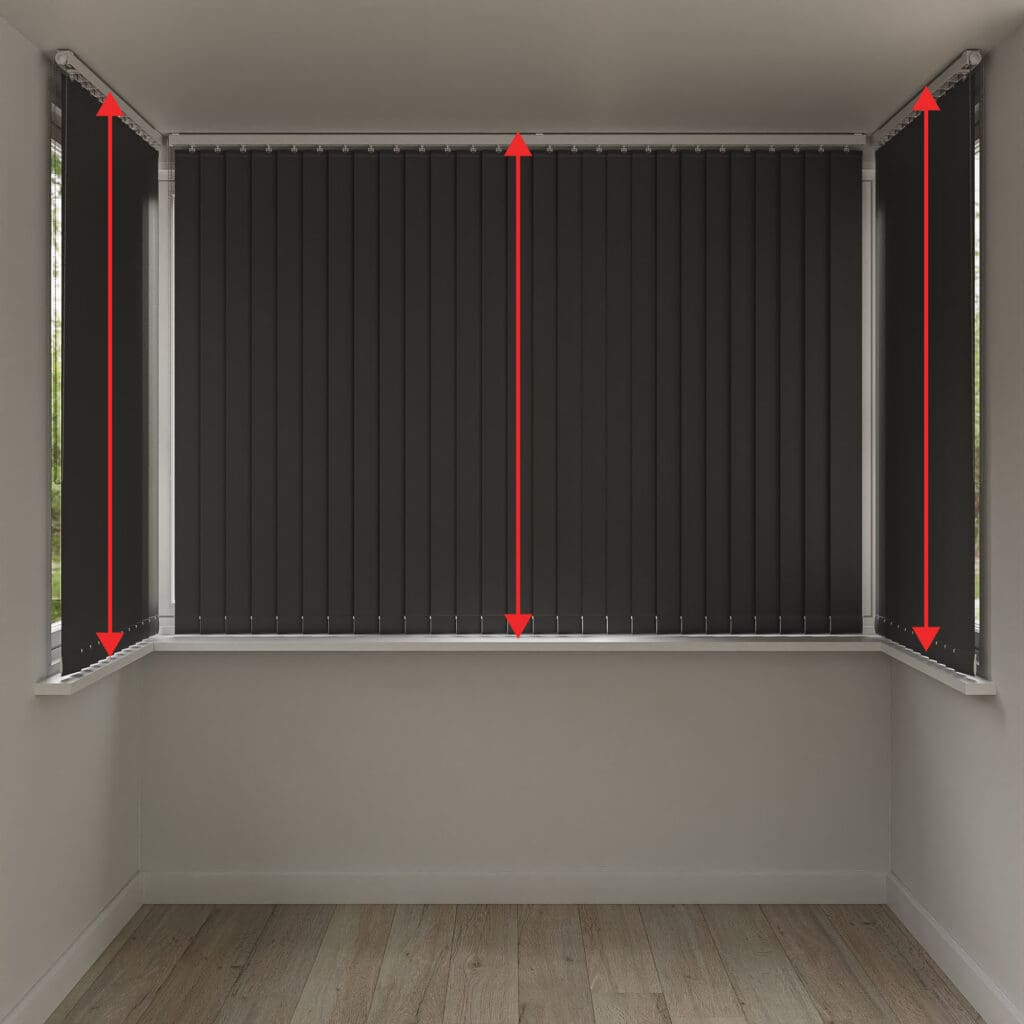Step 3 – Mark Your Measuring Points
Please note: Check your window for any obstructions such as handles or vents. You will need to add the depth of any obstruction to the depth of your blind.
1.Place your measuring cards flat on the window sill, at either side of a corner in your bay.
2.Bring the cards together, with the tops of the cards flush against the window frames, until the two total depth marks are touching.
3.Ensuring the cards remain flush to the window frames and keeping the total depth marks in contact, use a pencil to mark the window sill where the two total depth marks on your measuring templates are in contact.
4.Repeat the above steps for each corner in your window bay.
5.Mark your end measuring points (i.e. where you want your blinds to fit at either side of your bay window) according to your personal preference. Be mindful of any obstructions at either side of your window bay.
 About Us
About Us Free Samples
Free Samples Blinds on Finance
Blinds on Finance My Account
My Account Measuresafe
Measuresafe No Drill Blinds Comparison
No Drill Blinds Comparison


